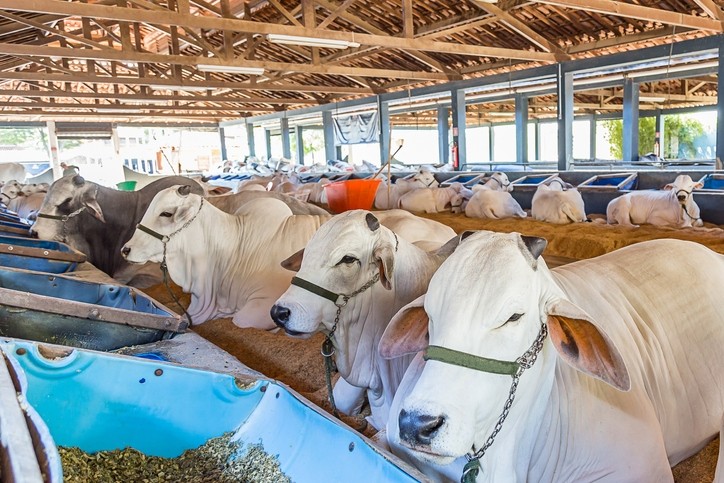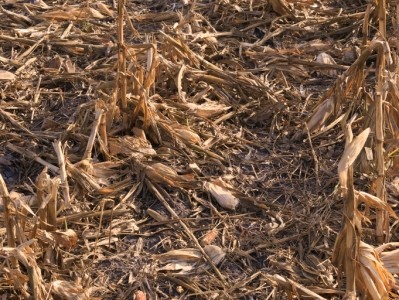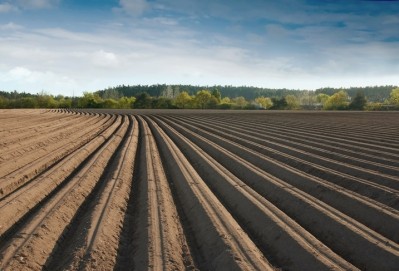Brazil: Brewer’s grains use could reduce cattle feed costs

A team of researchers from the Federal University of Santa Maria and the University Veterinary Hospital in Brazil explored the use of brewer’s spent grains as an alternative to corn in the diets of beef cattle.
Their study was published in the journal, Meat Science.
“This study aims to evaluate the potential use of BSG as a partial replacement for corn silage in the finishing diet of feedlot steers regarding stability of lipid, protein, color, and microbiological content of vacuum-packed beef under refrigerated storage for 75 days,” the researchers said.
The researchers found that the alternative diets maintained similar lipid and protein oxidation, meat color parameters and microbiocidal stability when compared to a control diet.
“Up to 35% (dry basis) brewer's spent grain may be included in finishing diets of cattle by as a forage source without adverse effects on meat shelf life during storage under commercial conditions,” the researchers said.
“The use of brewer's spent grain as a partial replacement for corn silage in beef cattle diets can be adopted as a strategy to reduce feeding costs and also as an alternative source of polyphenols from a material that needs to be recycled," they added.
Processing, oxidation and nutrition
The shelf life of beef relates to oxidation, which is influenced by exposure to oxygen, light, microbial growth and temperature, the researchers said. Oxidation requires an agent – most often oxygen.
However, practices like vacuum packaging can reduce or prevent lipid oxidation and provide a way to extend the shelf life of products, they said.
“The use of new technologies is essential to increase beef production and improve its quality to accord internal and external markets demands,” they said. “The consumer preference for natural products and health benefits has intensified the search for methods to retard lipid oxidation in foods, including the use of natural antioxidants, which may be a suitable alternative in animal feedstuffs, thus avoiding any further manipulation of the meat.”
Why add brewery spent grains to cattle diets?
Meat quality also can be influenced by animal nutrition, the researchers said. The use of alternative feed ingredients in cattle diets can alter system sustainability and address global interest and policies supporting the use of by-products.
Byproduct use in diets is seen to be a way to reduce pollution by industries and a way to provide inexpensive animal feed ingredients, they said.
The brewing industry produces a “low added value industrial by-product” in brewer’s spent grains (BSG), the researchers said. “This by-product accounts for about 85% of the waste generated in the whole brewing process with an annual output of around 38.6 million tons worldwide,” they added.
Composition of the byproduct can vary, but it tends to include high levels of fiber and protein along with lipids and minerals, they said. It also may have a high level of phenolic compounds with antioxidant potential including “hydroxycinnamic acids, such as ferulic acid and p-coumaric acid.”
“When BSG was compared with other ingredients (corn silage, rice bran, corn bran, and wheat bran) used in ruminant feeding, it had the highest concentration of polyphenols among the evaluated samples,” they said.
Some research has explored the use of natural compounds to influence meat quality and improve shelf life, the researchers said. However, little work has been done exploring the influence of BSG in feed on meat quality.
Feeding trial overview
During the feeding trial, cattle received one of four diets with varying amounts of BSG in place of corn silage at 0, 15, 25 or 35% of the dry matter, the researchers said. Diets also included rice bran, wheat bran, ground corn meal and a mineral-vitamin supplement.
“The diets were formulated using the Cornell (Cornell Net Carbohydrate and Protein System software) to provide a forage: concentrated ratio of 50:50 on the dry matter balanced to be similar in protein and energy,” they said. Steer had a 20-day adaptation period and the animals were on the diets for 110 days.
At harvest, the longissimus thoracis (LT) was collected, vacuum packed and stored for 0, 15, 30, 45, 60 or 75 days, they said. The protein oxidation was checked, samples were analyzed and pH levels, color and metmyoglobin concentrations were established.
Results
Overall, the lipid oxidation was similar for beef generated by cattle on all diets, the researchers said. Protein oxidation also was not altered by diet.
“BSG can be included in the finishing diets of beef cattle by up to 35% (dry basis) and as a forage source without adverse effects on beef shelf life,” they said.
Color and metmyoglobin pigment varied during the storage period but were not altered by diet, they said. Similarly, pH values and microbiological stability were not changed by diet but did decrease linearly as storage time increased.
“For both evaluated microorganisms, the counts remained below 7 log CFU g-1, up to 60 days of storage, which determines the product as fit for consumption according to the International Commission on Microbiological Specifications for Foods,” the researchers said. “However, the inclusion of polyphenols from the forage sources used in cattle diets was not able to extend the meat shelf life, that is, it had no significant effect on its microbial deterioration.”
Source: Meat Science
Title: Stability of vacuum-packed meat from finishing steers fed different inclusion levels of brewer's spent grain
Authors: F. Stefanello, A. Fruet, F. Trombetta, P. da Fonseca, M. da Silva, S. Stefanello, J. Nörnberg
DOI: doi.org/10.1016/j.meatsci.2018.09.004














